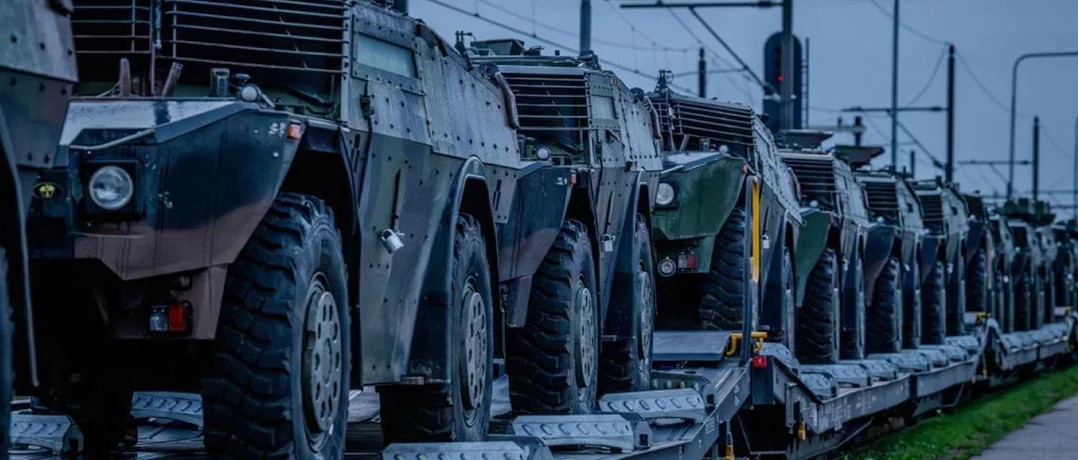The EU’s Military Mobility Package aims to speed troop and equipment movement, creating a “Military Schengen” for enhanced defense readiness.
EU’s new “Military Schengen”?

The European Commission has unveiled an ambitious new “Military Mobility Package” that could revolutionize how troops and military equipment move across the EU.
Under the reform, EU member states would be legally required to approve cross-border military transit within 3 days during peace, and in emergencies, that response time would be slashed to just 6 hours.
This shift seeks to eliminate decades of bureaucratic delay. As pointed out by European Commissioner for Sustainable Transport and Tourism, Apostolos Tzitzikostas, “Today, in order to move military equipment and troops from, let’s say west to east, unfortunately it takes months.” the new framework is designed to compress that to days. He claimed that “you cannot defend a continent if you cannot move across it.” For this reason, Tzitzikostas said that “we’re creating this military Schengen.”
A centralized military mobility transport group, with a national coordinator in each country, will oversee the process.
Crucially, this initiative is part of a broader effort to establish the “Military Schengen,” aiming to replicate, for military purposes, the free-movement zone that exists for civilians.
Infrastructure, logistics, and strategic Investment
To make rapid military movement possible, the Commission is pushing for large-scale upgrades to Europe’s transport infrastructure. Bridges, roads, tunnels, rail lines, ports, and other key transport nodes (around 500 in total) have been identified as needing modernization to support heavier and more frequent military use.
Estimations for these upgrades rest at around €100 billion. While the current 2021–2027 EU budget earmarked just €1.7 billion for military mobility, discussions are already underway for a major boost in the 2028–2034 budget to support this vision.
From here, Tzitzikostas said that “solid logistic networks make the difference between winning and losing wars,” adding that “the focus is on short-term, quick win investments to quickly increase capacity.”
The role of civil transport
One of the most innovative aspects of the plan is its integration of civilian road transport into military mobility. According to the International Road Transport Union (IRU) and EU documents, road networks are especially resilient during crises and less vulnerable to targeted attacks, making them essential for rapid cross-border operations.
Key proposed measures include:
- Streamlined cross-border authorization for military use of civilian vehicles
- Digitalized customs and clearance processes, including for “Form 302” permits
- A “Solidarity Pool” mechanism, where member states can offer available transport assets (like trucks, ferries, trains) for military purposes
The proposal also includes the ambitious allocation of €17.7 billion under the EU’s Connecting Europe Facility (CEF) to fund dual-use infrastructure upgrades.
Strengthening resilience and responding to strategic threats
The driving force behind the reforms is not theoretical. Geopolitical tensions, especially with Russia, have sharpened calls to make the EU more “defense-ready.” According to both the European Commission and external analysts, Europe’s current transport infrastructure is vulnerable and not well-prepared to handle the demands of rapid military deployment. Tzitzikostas claimed that “the geopolitical situation now in the world is not easy so we have to learn to move faster, we have to learn to work harder and we have to learn to bring the results much earlier than what one would expect.”
The military mobility package also includes a stronger legal and operational framework for emergencies. For instance, during a declared crisis, member states would grant priority access for military convoys to roads, trains, and border procedures.
Beyond mobility, the Commission is simultaneously rolling out a Defense Industry Transformation Roadmap, aimed at boosting innovation, cross-border defense production, and technologies relevant to modern warfare.
Challenges and the road ahead
Despite its ambition, the plan faces significant hurdles:
- Funding Gap: While the need for €100 billion is clear, current financing via EU budgets falls far short.
- Regulatory Complexity: Not all proposed measures are binding yet; certain elements remain in joint communications, which lack the enforceability of full regulations.
- Civilian-Military Balance: Integrating civilian transport into military operations raises questions over liability, contractual frameworks, and driver protection.
- Approval Process: The package still needs to pass through both the European Parliament and Council, and national governments may need to adjust long-standing procedures.
Why does this matter?
If adopted fully, this “Military Schengen” could dramatically reshape Europe’s defense architecture, making it faster, more coordinated, and more resilient. Amid evolving geopolitical risks, such speed and flexibility may prove essential for deterrence and rapid response.
From here, the EU’s “Military Schengen” could enhance the deployment of troops and weapons across the entire European continent in light of Russia’s war in Ukraine. This is especially important given rising tensions and infiltrations of Moscow’s drones, which signal an increasing hostile environment engulfing the continent.
But for the vision to become reality, political will and financial backing will be critical.



